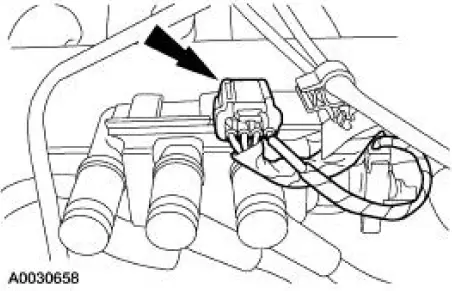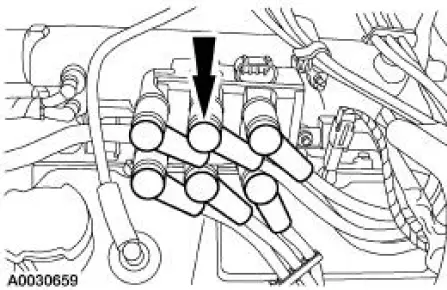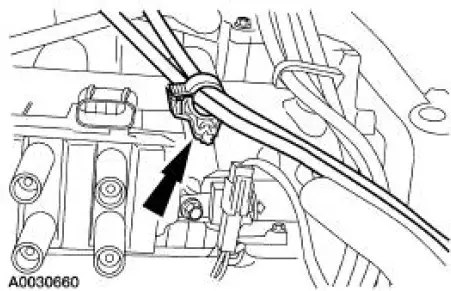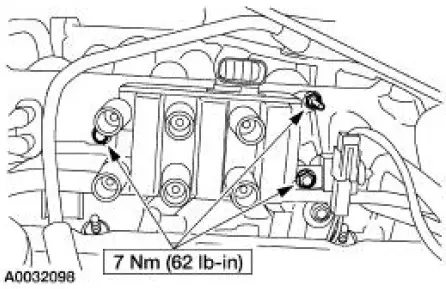Ford Mustang (1999-2004) Service Manual: Ignition Coil
Material
| Item | Specification |
| Silicone Brake Caliper Grease and Dielectric Compound D7AZ-19A331-A or equivalent | ESE-M1C171- A |
Removal and Installation
1. Disconnect the battery ground cable (14301). For additional information, refer to Section.
2. Disconnect the ignition coil electrical connector.

3. CAUTION: Spark plug wires (12286) must be connected to the correct ignition coil terminal. Mark spark plug wire locations before removing them.
Twist while pulling upward to disconnect the spark plug wires.

4. Disconnect the accelerator cable retaining clamp from the ignition coil stud bolt.

5. Remove the bolts and the ignition coil (12029).

6. NOTE: Apply silicone brake caliper grease and dielectric compound to the inside of the spark plug wire coil boot.
NOTE: Be sure to reinstall the radio ignition interference capacitor (18801) under the correct mounting bolt.
To install, reverse the removal procedure.
 Engine Ignition (Description and Operation)
Engine Ignition (Description and Operation)
The ignition coil (12029), which is mounted on the upper intake manifold, can
be described as a coil
pack containing three separate coil units. Each coil unit is individually
controlled by the power ...
 Spark Plug Wire
Spark Plug Wire
Special Tool(s)
Remover, Spark Plug Wire
303-106 (T74P-6666A)
Material
Item
Specification
Silicone Brake Caliper Grease
and Dielectric Compound
D7AZ-19A331-A or equiva ...
Other materials:
Steering System (Description and Operation)
The steering system has a typical rack-and-pinion design consisting of the
following:
Steering System Components - 3.8L Engine (CII Power Steering
Pump)
Steering System Components - 4.6L Engine (CIII Power Steering
Pump)
...
Handles, Locks, Latches and Mechanisms
General Specifications
Torque Specifications
LOCK REPAIR/REPLACEMENT SPECIFICATIONS
...
Assembly
1. Lubricate all components with the recommended transmission fluid when
reassembling.
2. Using the special tools, press the output shaft front bearing on the output
shaft.
3. Install the third gear bearing.
Apply petroleum jelly to the bearing.
4. I ...
